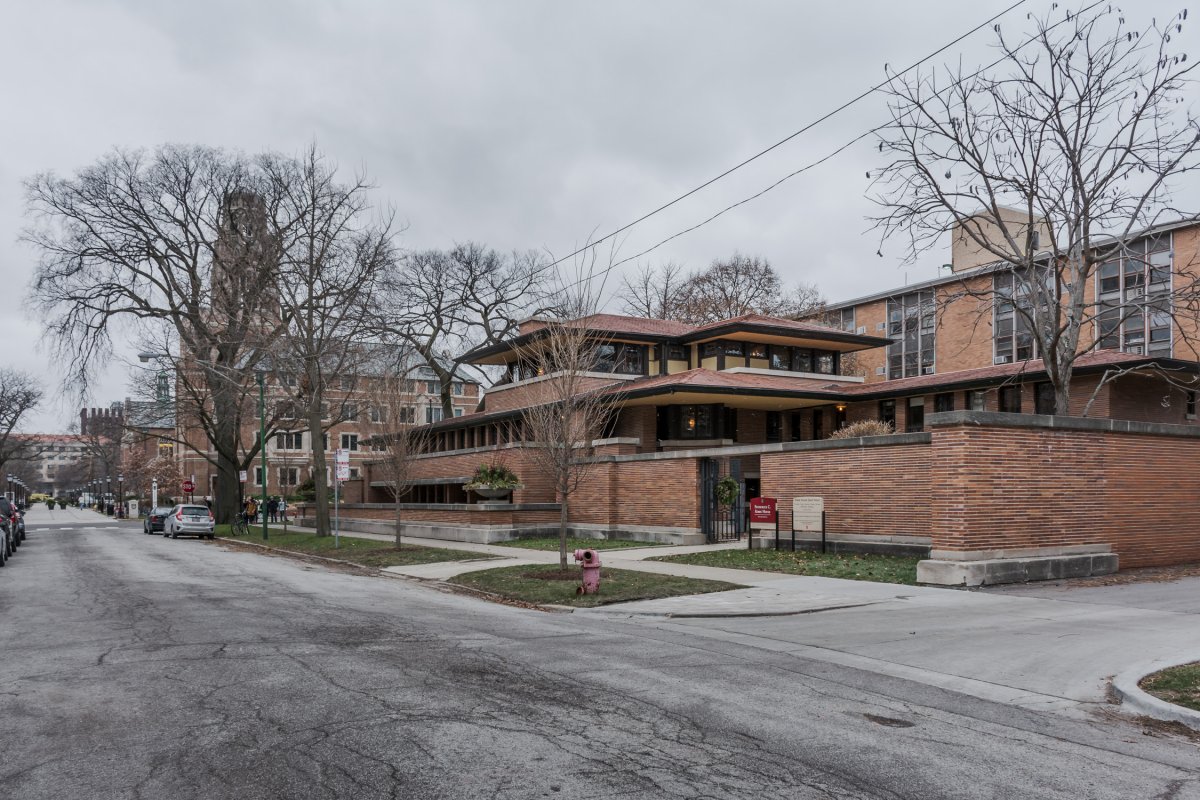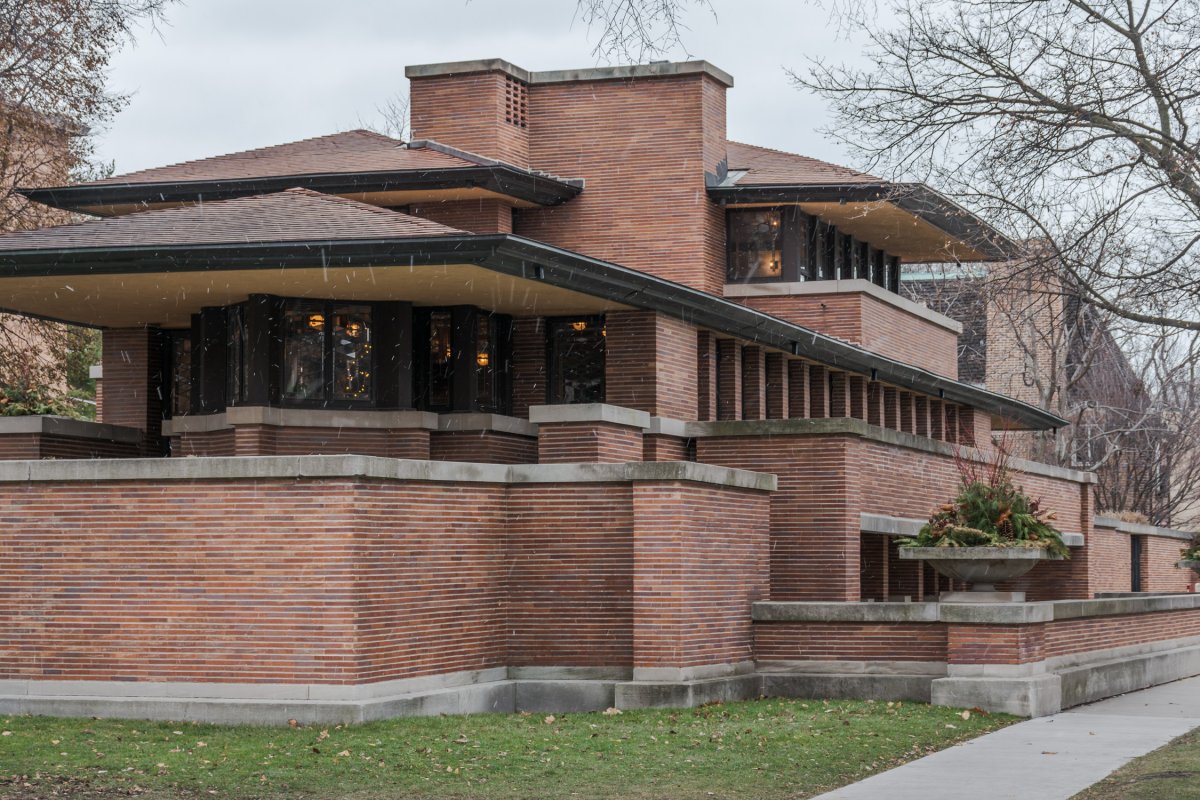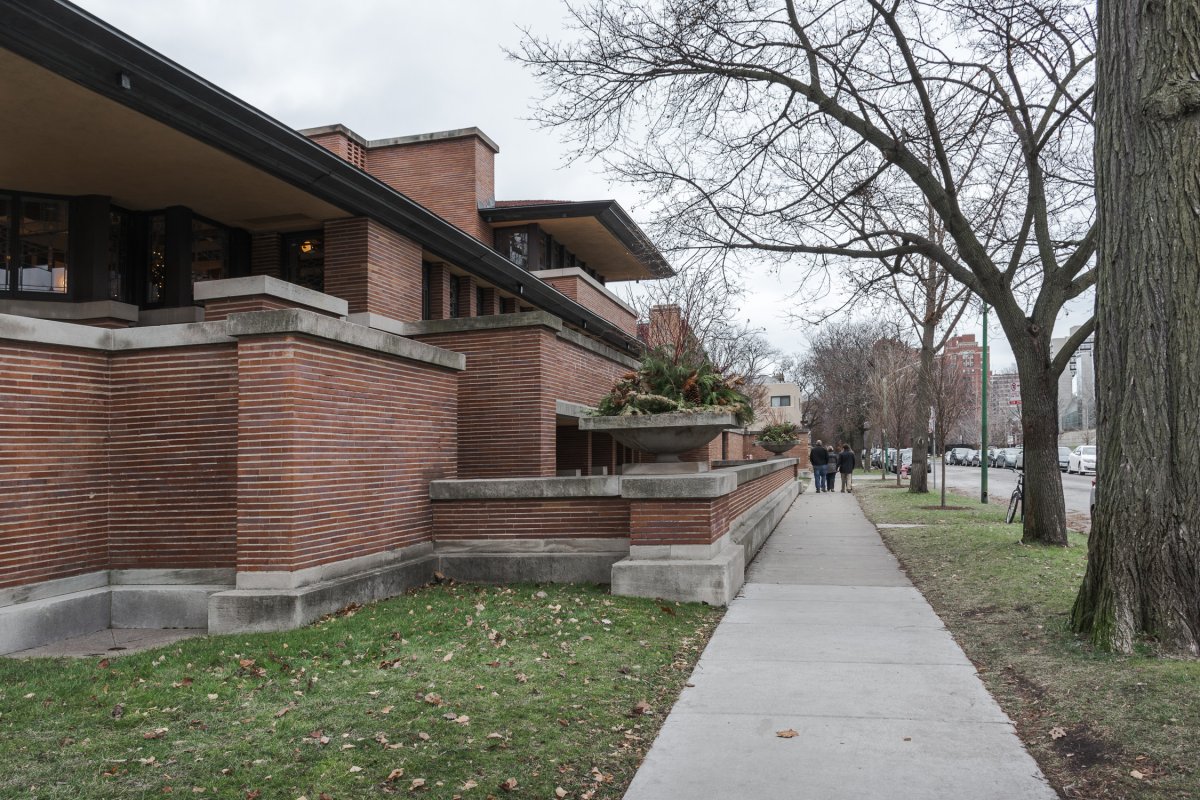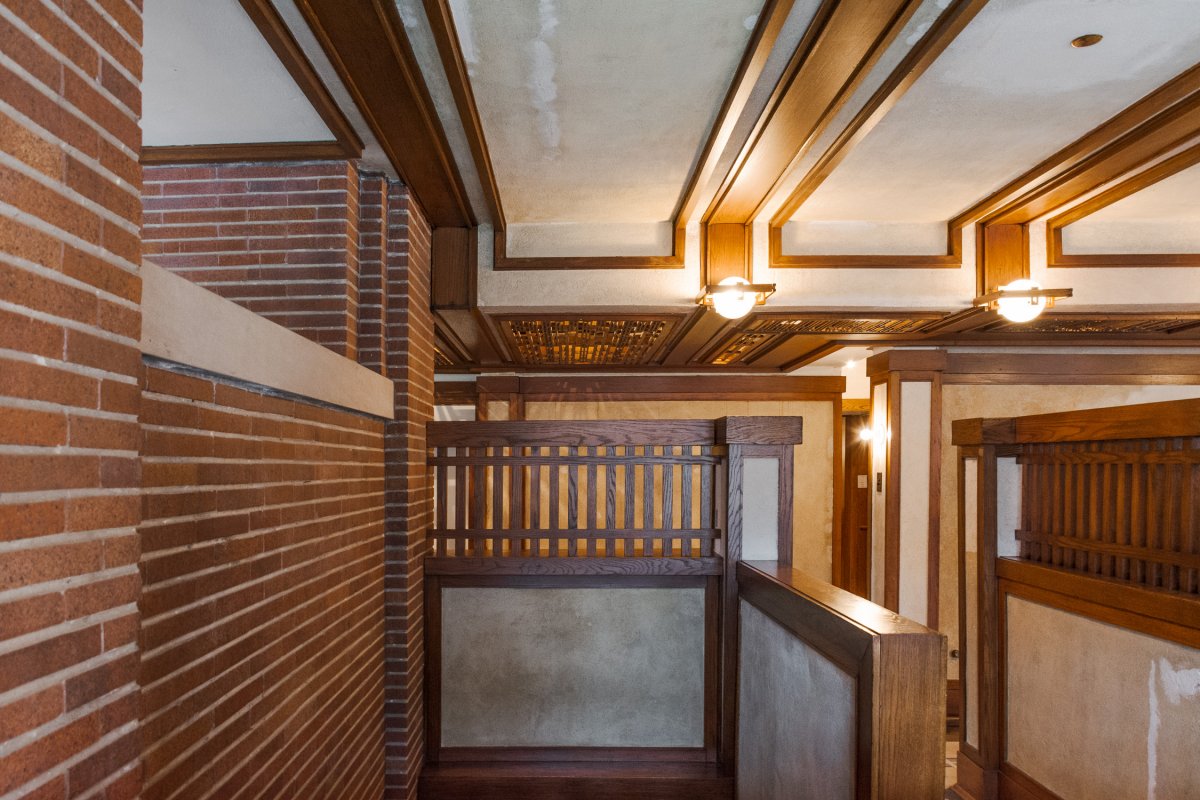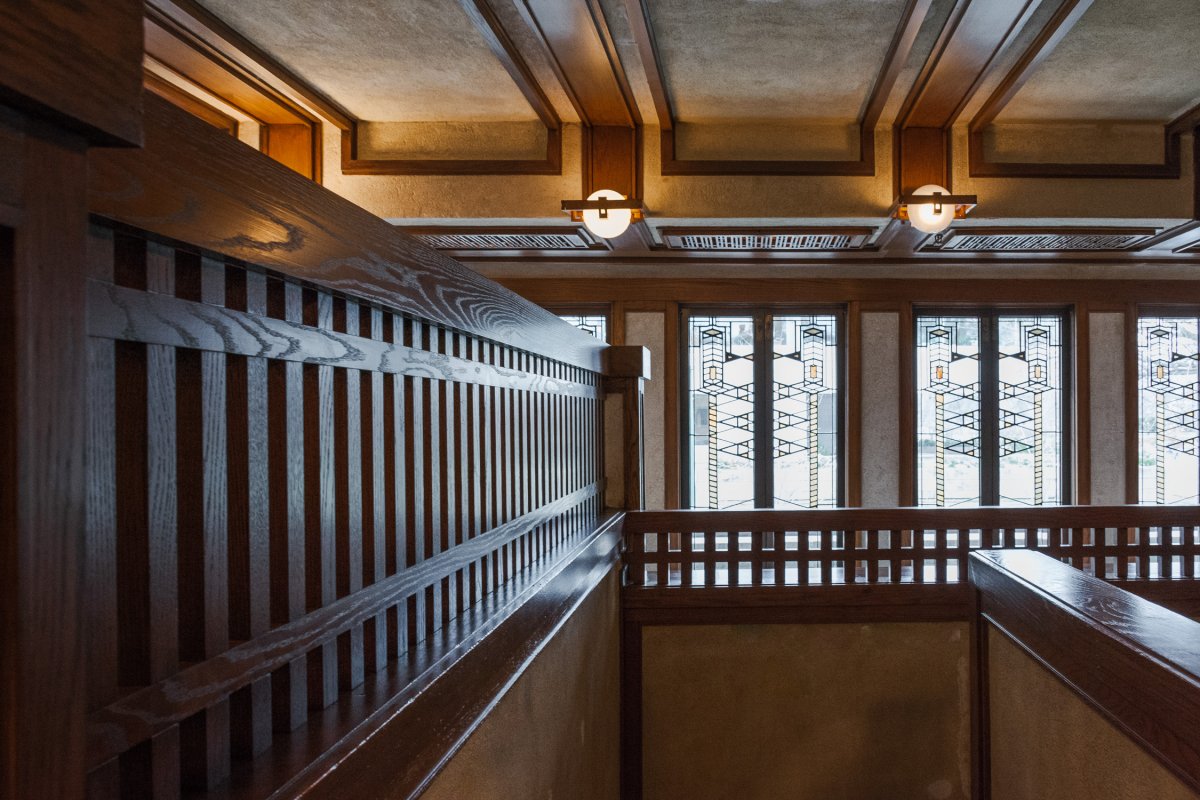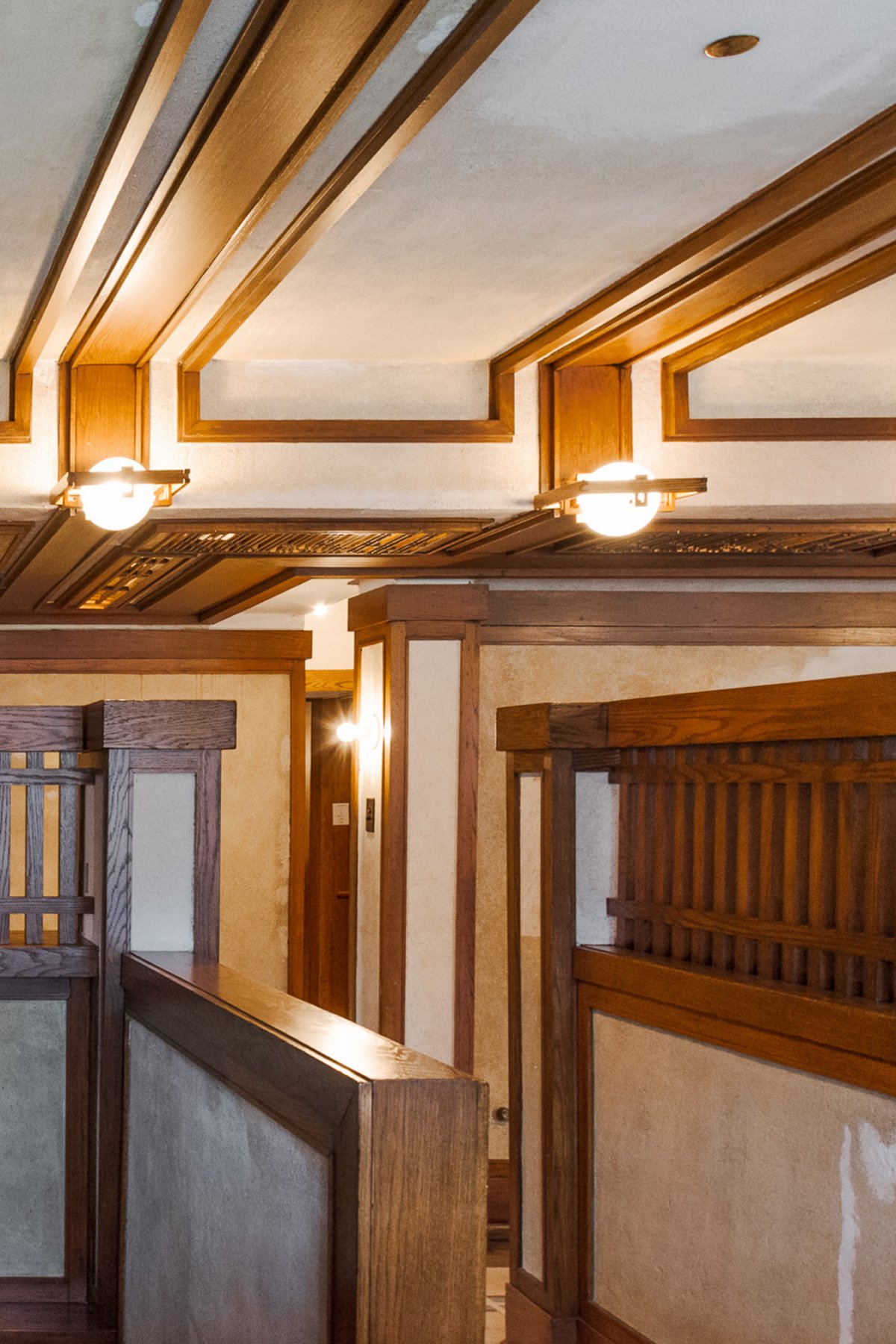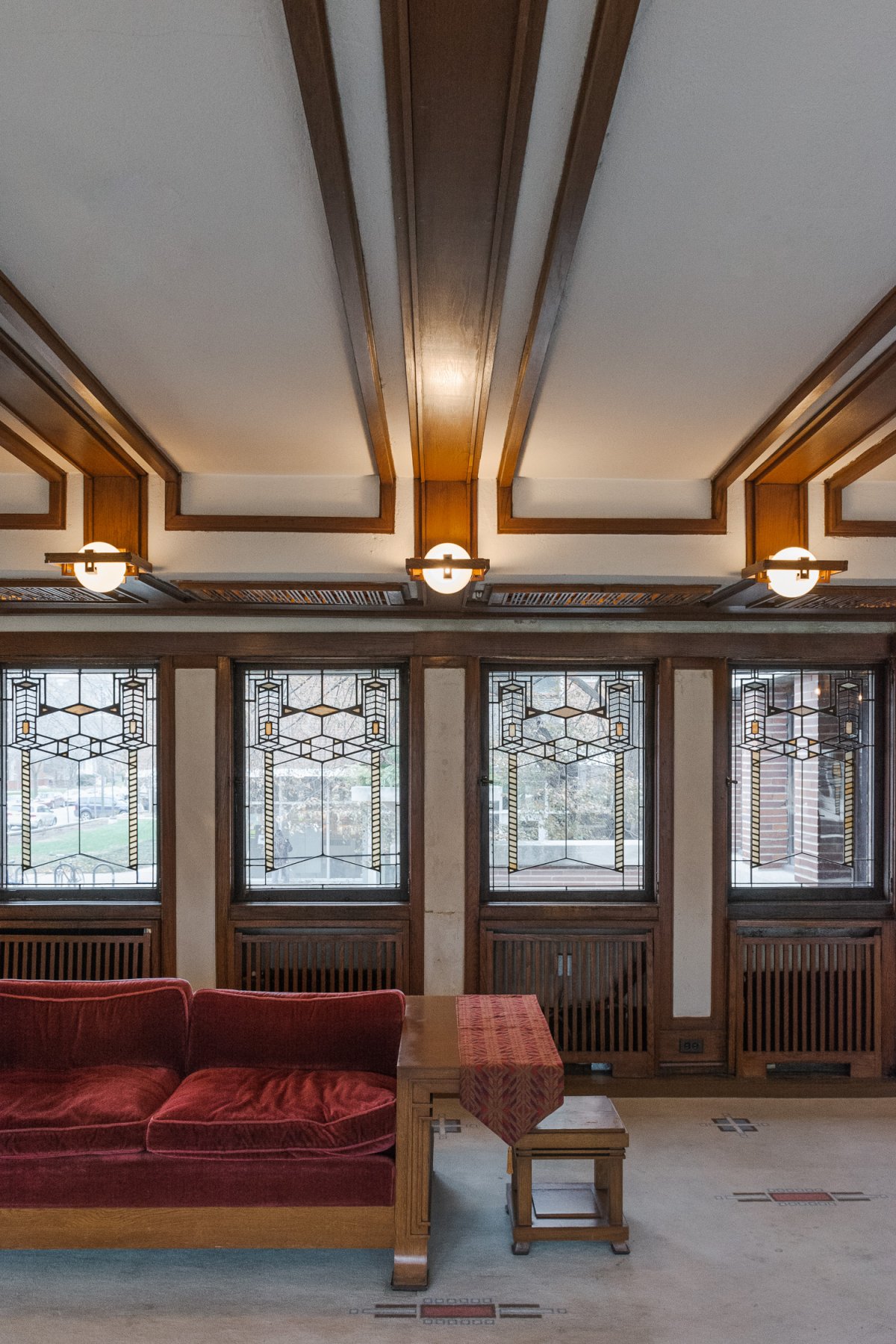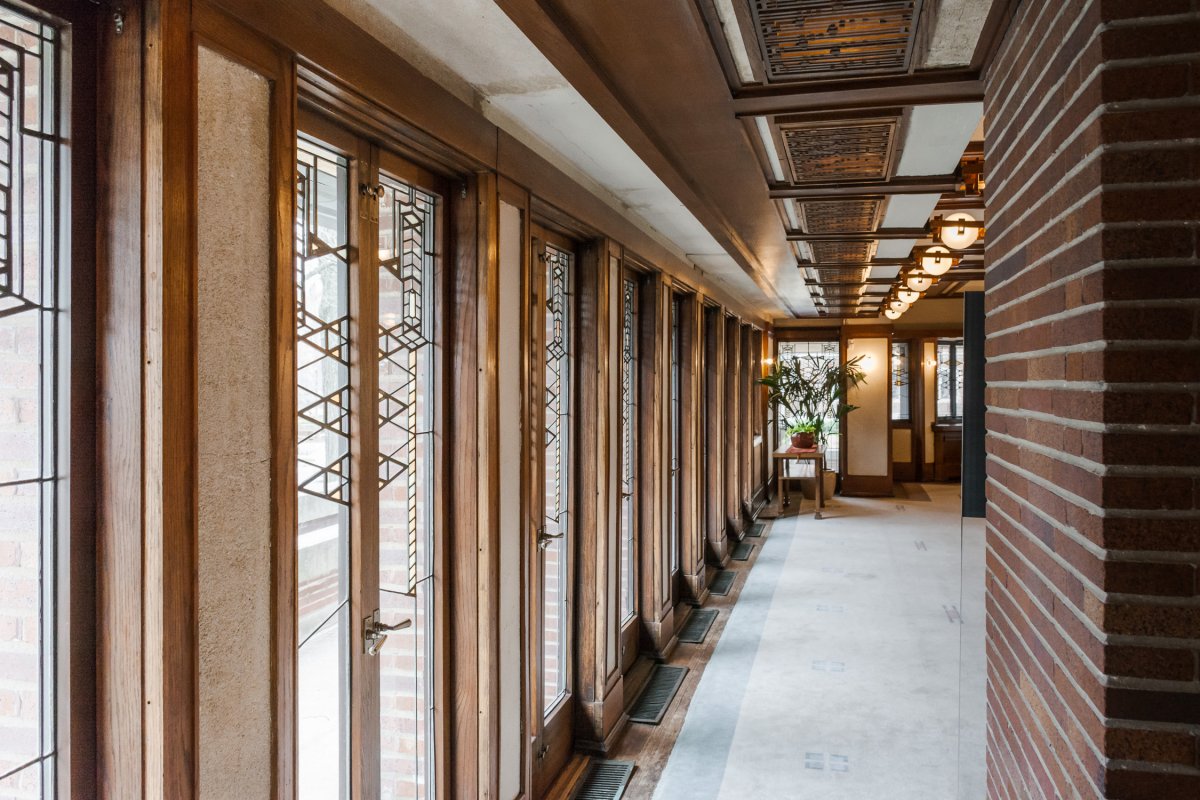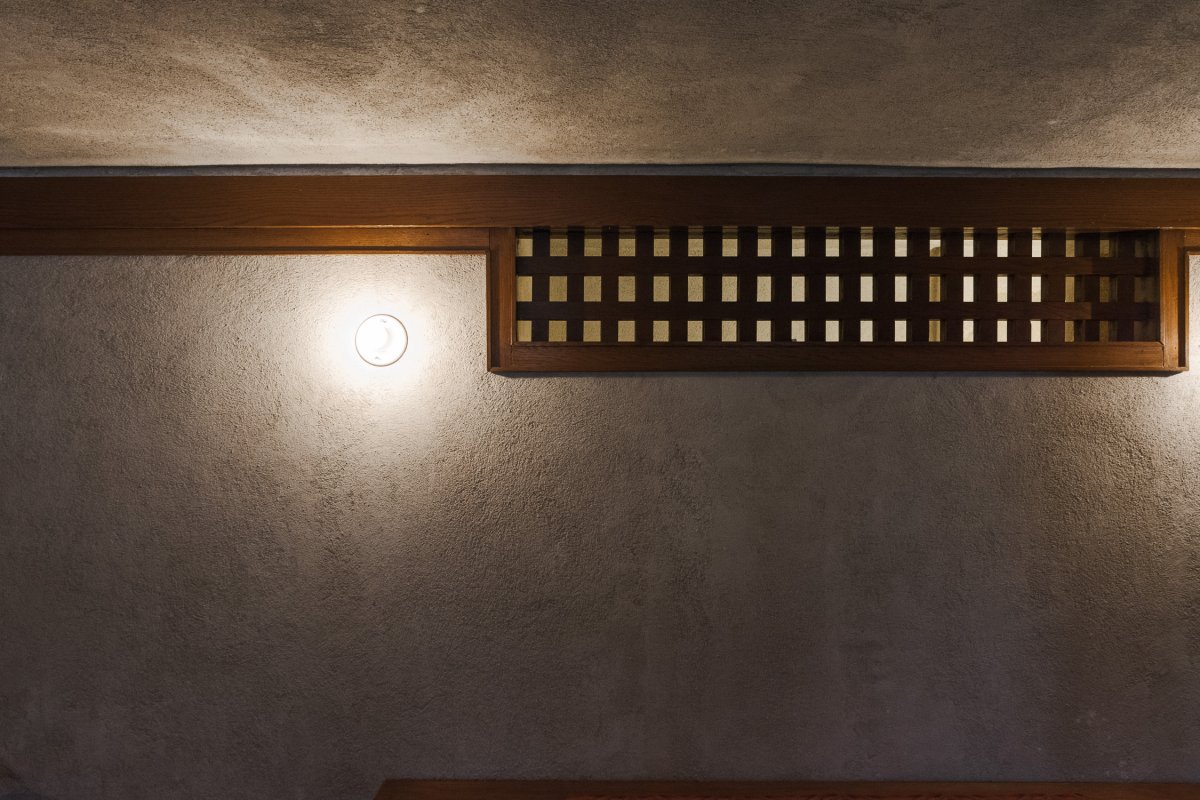
Designed as two large rectangles that seem to slide past one another, the long, horizontal residence in Chicago that Wright created for 28-year-old Frederick Robie, boldly established a new form of domestic design: the Prairie style.
As the first uniquely American architectural style, it responded to the expansive American plains by emphasizing the horizontal over the vertical. A dramatic twenty-foot cantilevered roof shades ribbons of art-glass windows below creates privacy and seamlessly connects the interior and exterior.
Inside, the typical warren of rooms is discarded for a light-filled open plan, centered around a main hearth. Wright responded not only to the openness of the American landscape, but also to the more informal quality of the modern American lifestyle. The Robie House’s influence on American architecture was immediate and undeniable.
- Architect: Frank Lloyd Wright(1867-1959)
- Photos: Columbia University Thomas A. Heinz
- Words: Qianqian

